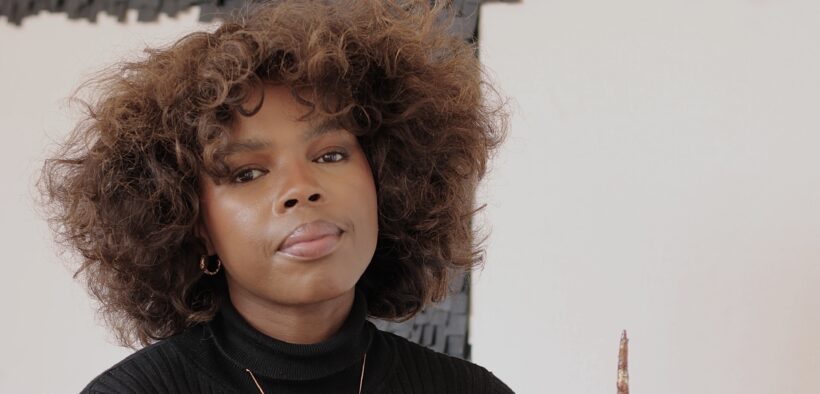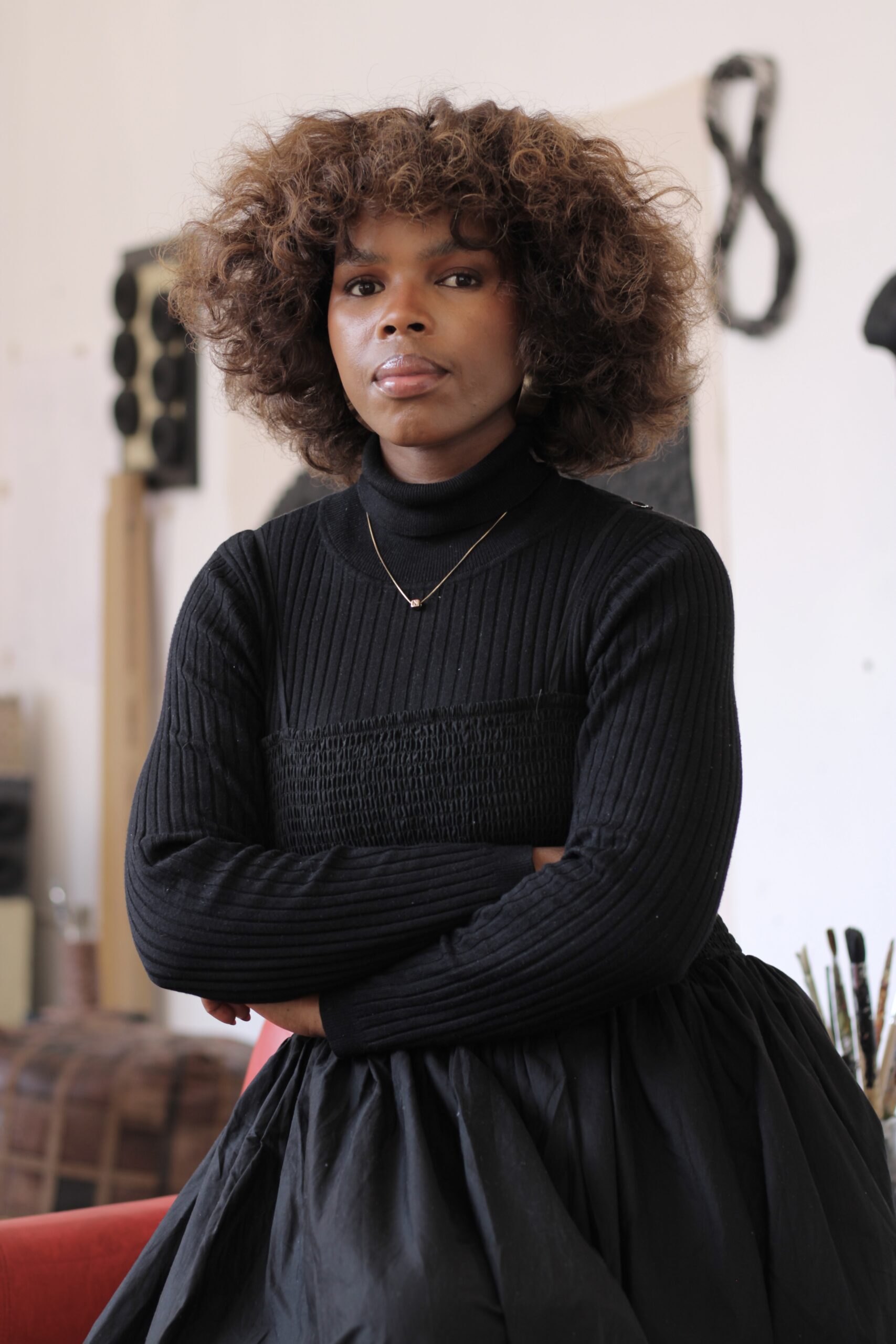Nwabisa Ntlokwana: Crafting Stories of Motherhood and Resilience Through Visual Art
Share

Visual arts has for long served as a powerful form of expression, allowing individuals to convey emotions, experiences, and perspectives in ways that go beyond words.
From painting to sculpture, these mediums create a space for deep reflection and connection, both for the artist and the audience. By transforming feelings, memories, and societal observations into visual representations, artists give shape to thoughts and experiences that might otherwise be difficult to articulate.
For Nwabisa Ntlokwana, becoming a visual artist was an intimate and transformative pilgrimage.

Nwabisa Ntlokwana | Supplied
“My journey into visual art as a career was born just after I gave birth to my son, Azizi,” she said. “It came from a profound need to express and process my own life experiences as a mother, particularly in relation to motherhood, my connection to my late mother, and shared stories.”
Nwabisa explains that visual art, especially using tactile mediums like papier mâché, allowed her to communicate feelings that words often failed to capture. Over time, her art became not only personal but a way to challenge societal ideas of motherhood, womanhood, and family. By using found objects and discarded materials to create her sculptures, she highlights both the beauty and chaos of these roles, making her work a unique blend of personal storytelling and environmental consciousness.
Born in KwaZulu-Natal’s Durban, the artist spent some time bouncing around between the Zulu Kingdom and Transkei. After her mother’s passing, she was then raised by various “important women in my life,” all of whom, she shares, shaped her understanding of being a caregiver, of strength, and of community.
“My father also played a significant role in my not so traditional upbringing experience and deeply influenced my sense of responsibility and independence,” she shares.

Nwabisa Ntlokwana | Supplied
Art has always been a part of her life, with a pivotal 13 years spent with her mother, who was a photographer and offered her a window into the world of the arts.
“My first experience with art was through her, watching her capture moments, emotions, and narrate stories through her lens. Through her, I learnt how art could express what words often couldn’t, and that creative spark was ignited in me and stayed alive till now. Although my journey took different paths, I always found myself drawn back to the world of art over time,” she shared.
This profound art bond that she has with her mother, and that has now spilled over to her son, is anchored on the reality of loss and the huge sense of responsibility she has carried from a young age. Thos experiences have all greatly influenced her take on the art form—weaving through relatable topics that most South Africans know.

“Having taken care of myself and my sister after my mother passed, I developed a strong sense of resilience, resourcefulness, and nurturing qualities that inform the way I approach my art,” she said.
“Visual arts has, therefore, become a very powerful form of storytelling. It’s a way of making the intangible emotions, memories and experiences tangible. Art is also a form of connection, not only to myself but to others. It bridges the gap between individual experiences and shared human emotions,” she shares.
Now based in Johannesburg, the city’s vibrancy and diversity has also poured greatly into her work, she shares.

Nwabisa Ntlokwana | Supplied
“This city is packed with people from all around the continent and is a melting pot of cultures, histories, and stories. The constant exchange of ideas, textures, and voices has pushed me to explore the intersections of my personal experiences with broader social and cultural narratives.
“Johannesburg’s energy is contagious; it encourages experimentation and fosters a sense of community that has been crucial in shaping my creative process. In a way, in Johannesburg, there is a strong dialogue between the past and the future, and this interplay is something I continually explore in my own work. The city’s art scene pushes me to question and redefine what is considered “traditional” and “modern” in both art and identity,” she shared.

And if she wasn’t a visual artist, her chosen career would still be within the arts—in a different form. Like a Jazz muso or an interior designer.
But as a doting mother, away from the arts, she loves spending time with her son out in nature, where she gets to reconnects with the outdoor world. With mother nature. But it’s never long that the creative is back in her bubble of art, where her mother’s presence is felt with every art piece that she carves.




